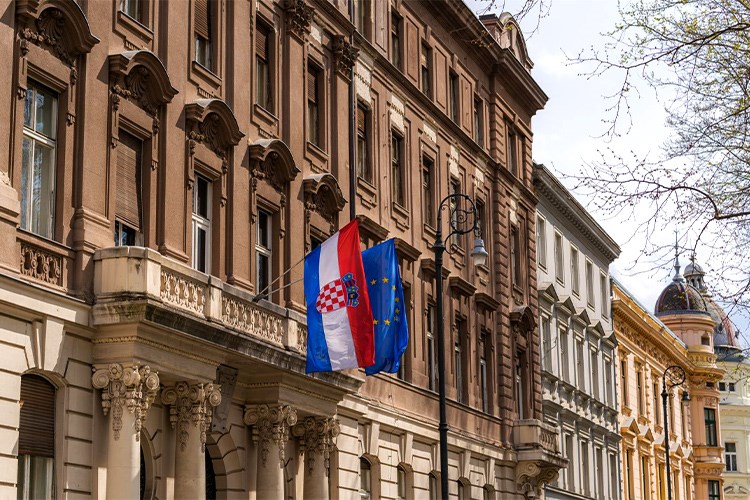On Thursday, 27 June 2019, the exhibition on Count Laval Nugent of Westmeath was opened to the public at the James Hardiman Library, National University of Ireland, Galway. The exhibition was launched by the Ambassador of the Republic of Croatia to Ireland Ivan Mašina and the guests to the opening were also welcomed by the Mayor of Galway City Mike Cubbard, the NUI Galway President Professor Ciarán Ó hÓgartaigh, the Mayor of the City of Rijeka Vojko Obersnel, the Rector of the University of Rijeka Professor Snježana Prijic Samaržija and the Director of the Moore Institute, NUI Galway, Professor Daniel Carey.
Laval Nugent - Warrior and Art Collector Exhibition was funded by the Ministry of Culture of the Republic of Croatia and developed by the Archaelogical Museum of Zagreb and the Embassy of the Republic of Croatia in Ireland. It was displayed in Dublin’s EPIC Museum and at the NUI Maynooth earlier this year and is supported by NUI Galway, City of Rijeka, Rijeka 2020, City of Galway and Galway 2020. This exhibition is part of a programme of events highlighting the links between the cities of Galway and Rijeka - both European Capitals of Culture in 2020.
Laval Nugent (1777-1862) was son of Count Michael Anton Nugent von Westmeath, Governor of Prague. In 1793, he joined the Austrian Army, becoming Colonel in 1807 and Chief of Staff of the Army corps of Archduke Johann of Austria in 1809. He was appointed the Supreme Military Commander in 1817 and served in the Croatian parliament. Laval Nugent ranks among the most distinguished of this elite cadre of noble Irish émigrés and rose to the very top of the Habsburg military and social establishment in the 19th century. Among his notable achievements, Nugent defeated Napoleon’s brother-in-law in battle, liberated Istria and Rome from the French, campaigned for Croatian independence and founded his own museum in the city of Rijeka. He was even made a Papal Prince in 1816 for driving Joachim Murat from Italy. Throughout his lifetime, he developed a strong affinity with Croatia and the Croatian people. The archaeological collections he assembled can still be viewed in the Archaeological Museum of Zagreb. Count Nugent died on 22 August 1862 in the Bosiljevo Castle, near Karlovac, and his body was later transferred to a sarcophagus in the Doric temple “Peace for the Hero”, in Trsat above Rijeka.
Press releases

